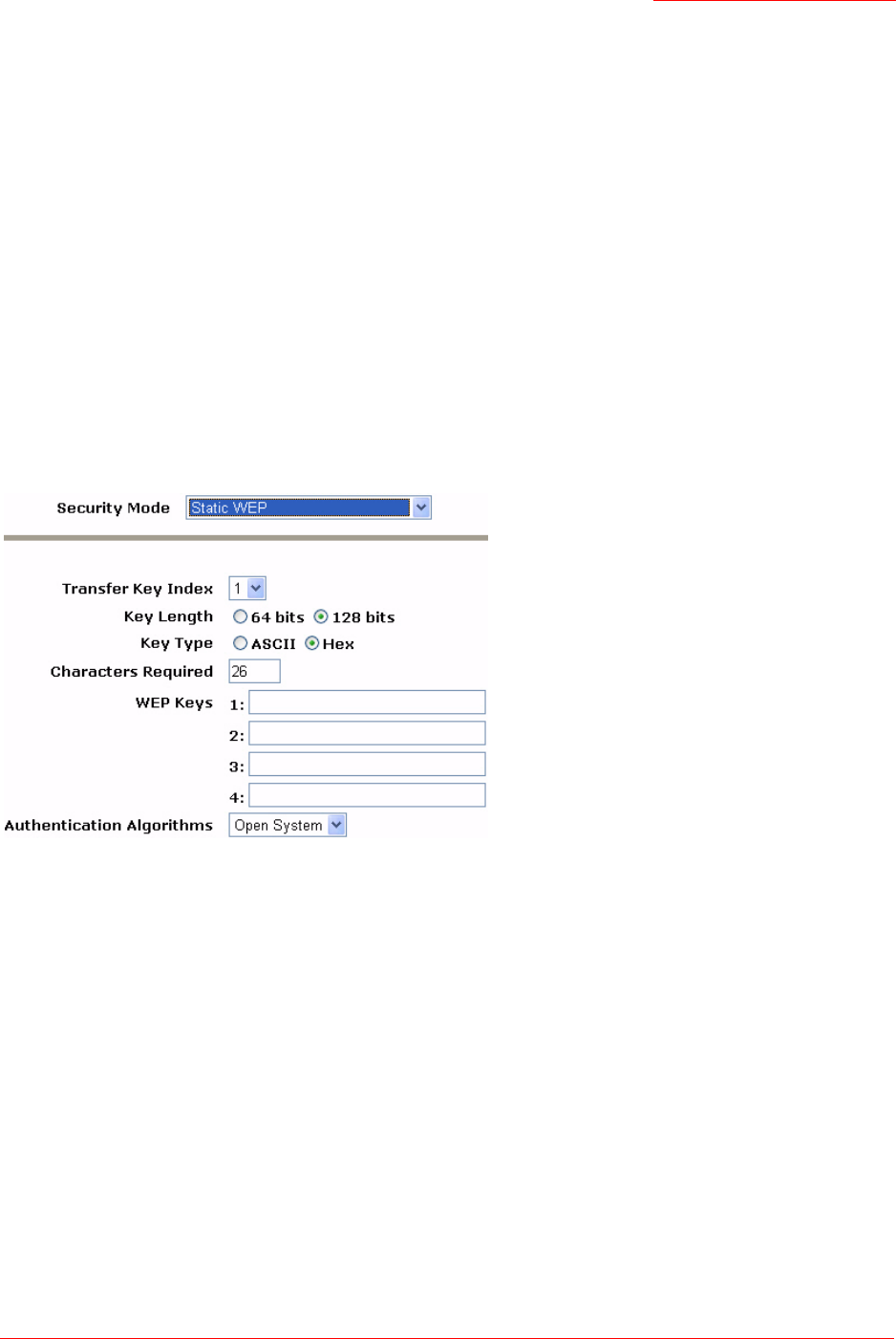Technical data
Table Of Contents
- Professional Access Point Administrator Guide
- Contents
- About This Document
- Getting Started
- Web User Interface
- Basic Settings
- Navigating to Basic Settings
- Review / Describe the Access Point
- Provide Administrator Password and Wireless Network Name
- Set Configuration Policy for New Access Points
- Update Basic Settings
- Summary of Settings
- Basic Settings for a Standalone Access Point
- Your Network at a Glance: Understanding Indicator Icons
- Cluster
- Status
- Advanced
- Basic Settings
- Command Line Interface
- Troubleshooting
- Regulatory Information
- U.S. Robotics Corporation Two (2) Year Limited Warranty
- Glossary
- Index

Professional Access Point
Administrator Guide
Security - 109
tialization vector (IV)) or 128-bit (104-bit secret key + 24-bit IV) Shared Key for data encryption.
You cannot mix 64-bit and 128-bit WEP keys between the access point and its clients.
Static WEP is not the most secure mode available, but it offers more protection than None as it does pre-
vent an outsider from easily sniffing out unencrypted wireless traffic. (For more secure modes, see the sec-
tions on “IEEE 802.1x” on page 114, “WPA/WPA2 Enterprise (RADIUS)” on page 117, or “WPA/WPA2
Personal (PSK)” on page 115.)
WEP encrypts data moving across the wireless network based on a static key. (The encryption algorithm is
a stream cipher called RC4.)
The access point uses a key to transmit data to the clients. Each client must use that same key to decrypt
data it receives from the access point.
Clients can use different keys to transmit data to the access point. (Or they can all use the same key, but
this is less secure because it means one station can decrypt the data being sent by another.)
If you selected Static WEP as the security mode, provide the following on the access point settings:










